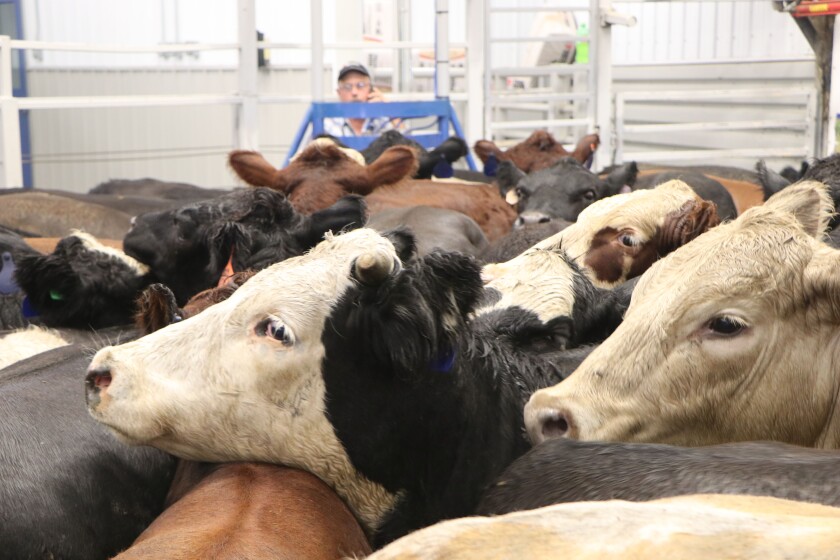Proactive Security: Bagley Risk Management Methods
Proactive Security: Bagley Risk Management Methods
Blog Article
Comprehending Animals Danger Protection (LRP) Insurance Coverage: A Comprehensive Overview
Navigating the world of livestock risk security (LRP) insurance can be a complex venture for several in the agricultural market. From exactly how LRP insurance operates to the numerous coverage choices available, there is much to uncover in this comprehensive overview that might potentially shape the method animals manufacturers approach danger monitoring in their businesses.

Exactly How LRP Insurance Policy Works
Sometimes, understanding the auto mechanics of Livestock Danger Protection (LRP) insurance policy can be complex, however breaking down just how it functions can supply quality for farmers and ranchers. LRP insurance coverage is a danger monitoring device made to safeguard livestock producers versus unexpected price declines. It's crucial to keep in mind that LRP insurance coverage is not an income warranty; instead, it focuses entirely on cost risk protection.
Eligibility and Protection Options

When it comes to protection choices, LRP insurance policy offers producers the flexibility to select the coverage degree, protection duration, and endorsements that best fit their danger administration demands. Protection levels normally vary from 70% to 100% of the anticipated finishing worth of the insured animals. Manufacturers can additionally choose coverage durations that straighten with their production cycle, whether they are insuring feeder cattle, fed cattle, swine, or lamb. Recommendations such as price threat protection can better tailor coverage to safeguard versus adverse market changes. By understanding the qualification criteria and protection options available, animals manufacturers can make informed choices to handle danger properly.
Benefits And Drawbacks of LRP Insurance
When examining Animals Danger Protection (LRP) insurance policy, it is vital for animals manufacturers to evaluate the benefits and downsides inherent in this risk administration tool.

Among the main advantages of LRP insurance is its capacity to supply security against a decline in livestock prices. This can aid secure manufacturers from monetary losses resulting from market variations. In addition, LRP insurance coverage uses a degree of adaptability, allowing manufacturers to tailor insurance coverage degrees and plan periods to fit their particular needs. By securing an ensured cost for their livestock, producers can much better manage danger and plan for the future.
One constraint of LRP insurance policy is that it does not secure against all types of dangers, such as condition outbreaks or natural disasters. It is crucial for producers to carefully examine their specific threat exposure and financial circumstance to identify if LRP insurance policy is the best threat management device for their operation.
Understanding LRP Insurance Policy Premiums

Tips for Optimizing LRP Perks
Making best use of the benefits of Animals Risk Security (LRP) insurance calls for tactical preparation and positive threat monitoring - Bagley check my blog Risk Management. To maximize your LRP insurance coverage, think about the complying with ideas:
On A Regular Basis Examine Market Conditions: Stay educated concerning market fads and price changes in the animals market. By keeping an eye on these variables, you can make enlightened decisions concerning when to acquire LRP coverage to protect against possible losses.
Set Realistic Insurance Coverage Degrees: When selecting insurance coverage degrees, consider your production prices, market price of animals, and potential risks - Bagley Risk Management. Establishing reasonable insurance coverage degrees guarantees that you are adequately safeguarded without paying too much for unneeded insurance
Expand go to the website Your Protection: Rather of depending only on LRP insurance, consider diversifying your danger management approaches. Integrating LRP browse around this web-site with various other danger monitoring tools such as futures contracts or choices can give comprehensive coverage against market unpredictabilities.
Review and Readjust Coverage Regularly: As market problems transform, occasionally examine your LRP protection to ensure it straightens with your present risk direct exposure. Changing insurance coverage degrees and timing of purchases can help maximize your risk protection strategy. By following these tips, you can make the most of the advantages of LRP insurance coverage and safeguard your animals operation versus unforeseen threats.
Final Thought
To conclude, livestock risk defense (LRP) insurance is a useful device for farmers to take care of the financial dangers related to their livestock procedures. By recognizing how LRP functions, eligibility and coverage options, as well as the pros and disadvantages of this insurance, farmers can make enlightened choices to safeguard their incomes. By carefully considering LRP premiums and carrying out methods to make best use of benefits, farmers can minimize prospective losses and ensure the sustainability of their operations.
Animals manufacturers interested in acquiring Livestock Danger Defense (LRP) insurance can explore a range of qualification criteria and insurance coverage choices tailored to their particular livestock procedures.When it comes to coverage options, LRP insurance provides producers the versatility to select the protection level, protection duration, and recommendations that finest match their danger administration requirements.To understand the ins and outs of Livestock Danger Security (LRP) insurance completely, understanding the aspects influencing LRP insurance premiums is crucial. LRP insurance policy premiums are established by different elements, including the protection degree selected, the expected cost of animals at the end of the coverage duration, the type of livestock being guaranteed, and the length of the insurance coverage duration.Testimonial and Adjust Protection On a regular basis: As market conditions transform, periodically examine your LRP coverage to ensure it aligns with your existing threat direct exposure.
Report this page